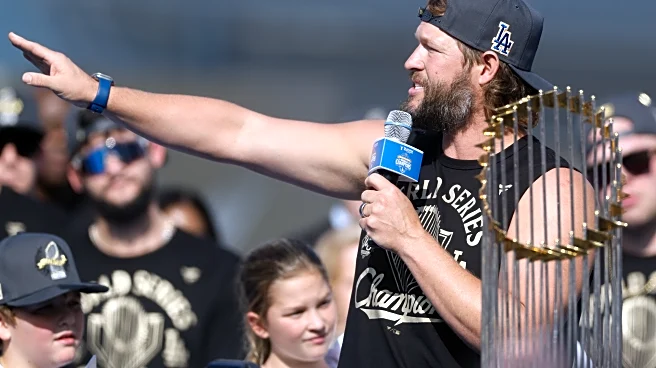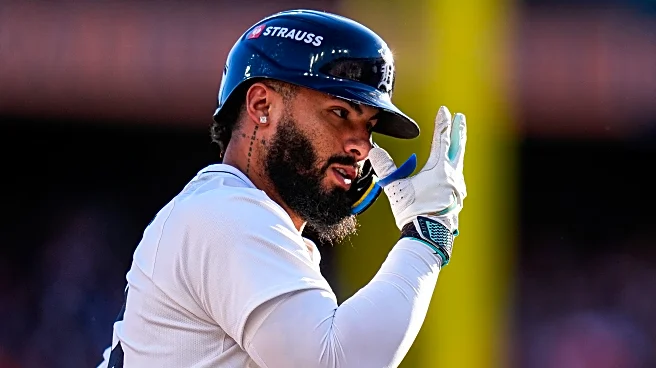What's Happening?
Kyle Tucker, a prominent baseball player, is entering free agency after a challenging 2025 season marked by injuries. Tucker began the year strongly but suffered a hairline fracture in his right hand and a calf
strain, which affected his performance and sidelined him for over three weeks. Despite these setbacks, Tucker's overall statistics include 22 home runs, 73 RBIs, and 25 stolen bases, with an .841 OPS over 136 games. His consistent performance over the past five seasons, with an fWAR between 4.2 and 4.9, makes him a valuable asset in the offseason market. The San Francisco Giants, who struggled in right field with a .209 average and .632 OPS, are potential suitors for Tucker, seeking to bolster their lineup in the competitive NL West.
Why It's Important?
Tucker's entry into free agency is significant for several reasons. His consistent performance makes him a desirable player despite recent injuries, which could impact his market value. Teams like the San Francisco Giants, who need to improve their offensive capabilities, particularly in right field, may find Tucker's skills appealing. His ability to contribute both offensively and defensively could help teams aiming to enhance their competitiveness in the league. Tucker's decision and subsequent team choice could influence the dynamics of team rosters and strategies in the upcoming season.
What's Next?
As Tucker navigates free agency, teams will assess his injury history and potential impact on their rosters. The Giants, among others, may pursue Tucker to address their right field deficiencies. Negotiations will likely focus on balancing Tucker's proven abilities with concerns about his recent injuries. The outcome of these discussions could shape team strategies and player movements in the offseason, affecting league standings and competitive balance.
Beyond the Headlines
Tucker's situation highlights broader issues in sports regarding player health and availability. Teams must weigh the risks of signing players with injury histories against their potential contributions. This scenario underscores the importance of medical evaluations and strategic planning in player acquisitions, influencing how teams manage their rosters and investments.













